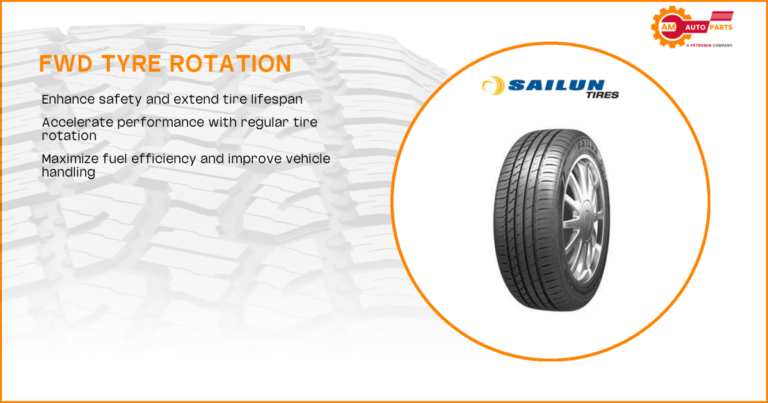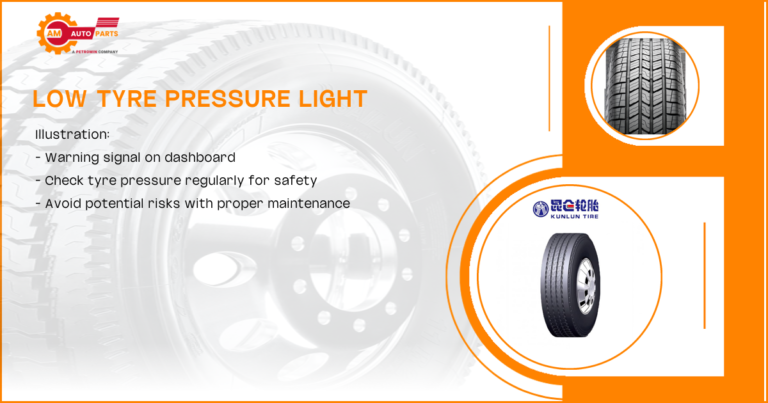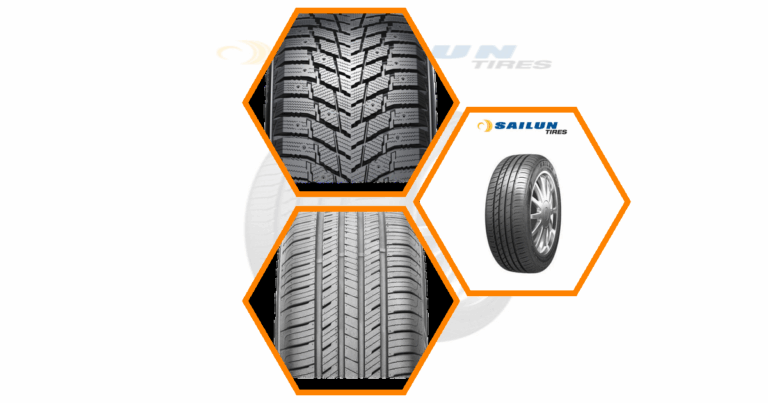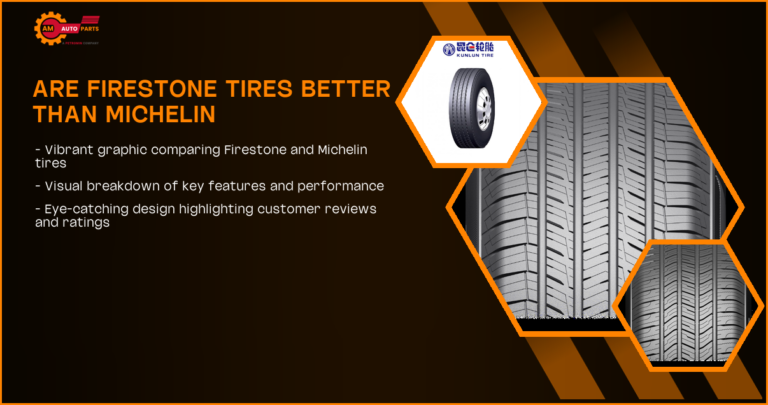Tire Rotation Importance and Benefits
What is tire rotation
Tire rotation is the process of moving the tires of a vehicle from one position to another to ensure even tire wear. This practice helps in maintaining the balance and handling of the vehicle, as well as extending the life of the tires. By regularly rotating your tires, you can prevent uneven wear patterns that can lead to premature tire replacement.
- Tire rotation involves changing the position of each tire.
- It helps in achieving uniform tire wear.
- Regular rotation is essential for vehicle safety and performance.
Why is tire rotation important
Tire rotation is crucial because it helps distribute wear more evenly across all four tires. This is important because tires wear differently depending on their position on the vehicle. For instance, front tires often wear out faster than rear ones due to steering and braking forces. By rotating them, you ensure that all tires wear at a similar rate, which can improve the lifespan of your tires and enhance vehicle safety.
- Ensures even tire wear and extends tire life.
- Improves vehicle handling and safety.
- Prevents premature tire replacement.
How often should you rotate your tires
The frequency of tire rotation depends on several factors, including the type of vehicle, driving conditions, and tire type. Generally, it is recommended to rotate your tires every 5,000 to 8,000 miles. However, always refer to your vehicle’s owner manual for specific guidance. Regular rotation helps maintain optimal performance and safety.
- Rotate tires every 5,000 to 8,000 miles.
- Check the vehicle’s owner manual for specific recommendations.
- Regular rotation is key to maintaining tire health.
Benefits of regular tire rotation
Regular tire rotation offers numerous benefits, including improved vehicle performance, enhanced safety, and cost savings. By ensuring even tire wear, you can enjoy a smoother ride and better fuel efficiency. Additionally, regular rotation can help prevent costly repairs and extend the life of your tires.
- Enhances vehicle performance and safety.
- Increases fuel efficiency and saves money.
- Extends the lifespan of your tires.
Different Types of Tire Rotation Patterns
Rearward cross pattern
The rearward cross pattern is suitable for rear-wheel and four-wheel drive vehicles. In this pattern, the rear tires are moved to the front, and the front tires are crossed to the opposite rear positions. This pattern helps in achieving even wear across all tires.
- Ideal for rear-wheel and four-wheel drive vehicles.
- Rear tires move to the front, front tires cross to the rear.
- Promotes even tire wear.
X-pattern rotation
The X-pattern rotation is commonly used for front-wheel drive vehicles. In this pattern, each tire is moved diagonally, meaning the front left tire goes to the rear right position and vice versa. This pattern helps in balancing tire wear effectively.
- Suitable for front-wheel drive vehicles.
- Tires are moved diagonally across the vehicle.
- Balances tire wear efficiently.
Forward cross pattern
The forward cross pattern is another option for front-wheel drive vehicles. In this pattern, the front tires are moved to the rear, and the rear tires are crossed to the opposite front positions. This pattern helps in achieving uniform tire wear.
- Used for front-wheel drive vehicles.
- Front tires move to the rear, rear tires cross to the front.
- Ensures uniform tire wear.
Side-to-side rotation for performance tires
Performance tires often require a side-to-side rotation pattern. In this pattern, the tires on the same axle are swapped with each other. This is particularly useful for vehicles with high-performance tires that have specific tread patterns.
- Suitable for performance tires.
- Tires on the same axle are swapped.
- Maintains specific tread patterns.
Front-to-back rotation for directional tires
Directional tires have a specific tread pattern designed to rotate in one direction. For these tires, a front-to-back rotation is recommended, where the front tires are moved to the rear and vice versa, without crossing them.
- Ideal for directional tires.
- Front tires move to the rear, rear tires move to the front.
- Preserves directional tread pattern.
Tire Rotation for Different Vehicle Types
Front-wheel drive vehicles
For front-wheel drive vehicles, the front tires typically wear out faster due to steering and braking forces. Using the forward cross or X-pattern rotation can help in achieving even tire wear and maintaining vehicle performance.
- Front tires wear faster in front-wheel drive vehicles.
- Use forward cross or X-pattern rotation.
- Ensures even tire wear and performance.
Rear-wheel drive vehicles
In rear-wheel drive vehicles, the rear tires often experience more wear due to the power being delivered to the rear axle. The rearward cross pattern is recommended to balance the wear between the front and rear tires.
- Rear tires wear faster in rear-wheel drive vehicles.
- Use rearward cross pattern for rotation.
- Balances tire wear effectively.
Four-wheel drive and all-wheel drive vehicles
Four-wheel and all-wheel drive vehicles require regular tire rotation to ensure even wear across all tires. The rearward cross pattern is often recommended for these vehicles to maintain optimal performance and safety.
- Regular rotation is crucial for four-wheel and all-wheel drive vehicles.
- Use rearward cross pattern for even wear.
- Maintains performance and safety.
Vehicles with differently sized front and rear tires
Some vehicles have differently sized front and rear tires, which limits rotation options. In such cases, side-to-side rotation is often the only viable option to ensure even wear and maintain vehicle performance.
- Limited rotation options for vehicles with different tire sizes.
- Use side-to-side rotation for even wear.
- Maintains vehicle performance.
How to Perform a Tire Rotation
Tools needed for tire rotation
Performing a tire rotation requires specific tools to ensure the process is done safely and effectively. Essential tools include a car jack, jack stands, a lug wrench, and a torque wrench. These tools help in lifting the vehicle, removing the tires, and securing them in their new positions.
- Car jack and jack stands for lifting the vehicle.
- Lug wrench for removing and securing tires.
- Torque wrench for proper tightening.
Step-by-step guide to rotating tires
Rotating tires involves several steps to ensure the process is done correctly. First, loosen the lug nuts on all tires before lifting the vehicle. Use the car jack and jack stands to lift the vehicle safely. Remove the tires and reposition them according to the chosen rotation pattern. Finally, tighten the lug nuts using a torque wrench to the manufacturer’s specifications.
- Loosen lug nuts before lifting the vehicle.
- Use jack and stands to lift the vehicle safely.
- Reposition tires according to the rotation pattern.
- Tighten lug nuts with a torque wrench.
Safety precautions during tire rotation
Safety is paramount when performing a tire rotation. Always ensure the vehicle is on a flat, stable surface before lifting it. Use jack stands to support the vehicle, never rely solely on the car jack. Wear protective gear, such as gloves and safety glasses, to prevent injuries.
- Ensure the vehicle is on a flat, stable surface.
- Use jack stands for support, not just the car jack.
- Wear protective gear for safety.
Tire Rotation and Vehicle Maintenance
Relationship between tire rotation and wheel alignment
Tire rotation and wheel alignment are closely related, as both contribute to even tire wear and optimal vehicle performance. While tire rotation involves changing tire positions, wheel alignment ensures the wheels are set to the correct angles. Regular alignment checks are recommended alongside tire rotation to maintain vehicle handling and safety.
- Tire rotation and alignment both ensure even tire wear.
- Alignment checks should accompany tire rotation.
- Maintains vehicle handling and safety.
Impact of tire rotation on tire wear and tread life
Regular tire rotation significantly impacts tire wear and tread life by ensuring even distribution of wear across all tires. This practice helps in extending the lifespan of the tires, reducing the need for premature replacements, and maintaining optimal vehicle performance.
- Ensures even distribution of tire wear.
- Extends tire lifespan and reduces replacements.
- Maintains vehicle performance.
Tire rotation and fuel efficiency
Tire rotation can improve fuel efficiency by ensuring even tire wear and maintaining proper tire pressure. Evenly worn tires reduce rolling resistance, which can lead to better fuel economy. Regular rotation, combined with proper tire maintenance, can result in significant fuel savings.
- Improves fuel efficiency by reducing rolling resistance.
- Ensures even tire wear and proper pressure.
- Leads to significant fuel savings.
Tire Rotation for Special Circumstances
Rotating tires with a full-size spare
When rotating tires with a full-size spare, include the spare in the rotation pattern. This helps in ensuring even wear across all five tires, extending their lifespan. The five-tire rotation pattern is recommended for vehicles with a full-size spare.
- Include the full-size spare in the rotation.
- Use a five-tire rotation pattern.
- Ensures even wear and extends tire lifespan.
Tire rotation for vehicles with studded tires
Vehicles with studded tires require special attention during rotation. It’s important to follow the manufacturer’s guidelines for rotation patterns to maintain optimal performance and safety. Regular rotation helps in achieving even wear and prolonging the life of studded tires.
- Follow manufacturer’s guidelines for studded tires.
- Regular rotation ensures even wear.
- Maintains performance and safety.
Rotating high-performance and directional tires
High-performance and directional tires have specific tread patterns that require careful rotation. Use the front-to-back rotation pattern to maintain the directional tread and ensure even wear. This helps in preserving the performance characteristics of these specialized tires.
- Use front-to-back rotation for directional tires.
- Maintains directional tread pattern.
- Preserves performance characteristics.
Common Tire Rotation Mistakes to Avoid
Incorrect rotation patterns
Using incorrect rotation patterns can lead to uneven tire wear and compromised vehicle performance. Always follow the manufacturer’s recommendations for the correct rotation pattern based on your vehicle and tire type.
- Incorrect patterns lead to uneven wear.
- Follow manufacturer’s recommendations.
- Ensures optimal performance.
Neglecting to check tire pressure during rotation
Failing to check tire pressure during rotation can result in uneven wear and reduced fuel efficiency. Always check and adjust tire pressure as needed during the rotation process to maintain optimal performance and safety.
- Check tire pressure during rotation.
- Ensures even wear and fuel efficiency.
- Maintains performance and safety.
Rotating tires too frequently or infrequently
Rotating tires too frequently or infrequently can affect tire wear and vehicle performance. Follow the recommended rotation schedule based on your vehicle and driving conditions to ensure even wear and optimal performance.
- Follow recommended rotation schedule.
- Avoids excessive or insufficient rotation.
- Ensures even wear and performance.
Tire Rotation and Vehicle Safety
How proper tire rotation improves handling and braking
Proper tire rotation improves handling and braking by ensuring even tire wear and maintaining optimal tread depth. Evenly worn tires provide better traction and stability, enhancing vehicle safety and performance.
- Ensures even tire wear and optimal tread depth.
- Improves traction and stability.
- Enhances safety and performance.
Tire rotation’s role in preventing blowouts and accidents
Regular tire rotation helps prevent blowouts and accidents by maintaining even tire wear and proper tire pressure. Evenly worn tires reduce the risk of blowouts, which can lead to accidents and vehicle damage.
- Maintains even wear and proper pressure.
- Reduces risk of blowouts and accidents.
- Enhances vehicle safety.
Importance of tire rotation for wet and winter driving conditions
Tire rotation is crucial for wet and winter driving conditions, as it ensures even tread wear and optimal traction. Evenly worn tires provide better grip on wet and icy roads, reducing the risk of skidding and accidents.
- Ensures even tread wear and optimal traction.
- Provides better grip on wet and icy roads.
- Reduces risk of skidding and accidents.
Advanced Tire Rotation Techniques
Five-tire rotation pattern
The five-tire rotation pattern includes the spare tire in the rotation process, ensuring even wear across all five tires. This pattern is ideal for vehicles with a full-size spare and helps in extending the lifespan of all tires.
- Includes spare tire in rotation.
- Ensures even wear across all five tires.
- Extends tire lifespan.
Dual wheel rotation patterns for trucks
Trucks with dual wheels require specific rotation patterns to ensure even wear. The dual wheel rotation pattern involves swapping the inner and outer tires on the same axle, promoting uniform wear and extending tire life.
- Specific pattern for dual wheel trucks.
- Swaps inner and outer tires on the same axle.
- Promotes uniform wear and extends tire life.
Modified cross rotation for specific vehicle types
Some vehicles may require a modified cross rotation pattern to accommodate unique tire and vehicle characteristics. This pattern involves crossing the front and rear tires to opposite positions, ensuring even wear and maintaining performance. EV tire selection is about choosing the right tires for electric vehicles These special tires help EVs drive better and use less energy
- Modified pattern for specific vehicles.
- Crosses front and rear tires to opposite positions.
- Ensures even wear and performance.
Tire Rotation and Warranty Considerations
How tire rotation affects tire warranties
Regular tire rotation is often a requirement for maintaining tire warranties. Failing to rotate tires as recommended can void the warranty, leading to potential out-of-pocket expenses for tire replacements.
- Regular rotation is required for warranty.
- Failing to rotate can void the warranty.
- Prevents out-of-pocket expenses.
Documenting tire rotations for warranty purposes
Documenting tire rotations is essential for warranty purposes. Keep records of each rotation, including the date, mileage, and service provider. This documentation can be crucial in the event of a warranty claim.
- Keep records of each rotation.
- Include date, mileage, and service provider.
- Essential for warranty claims.
AM Autoparts tire rotation services and warranty support
AM Autoparts offers comprehensive tire rotation services and warranty support. Their professional services ensure proper rotation patterns and documentation, helping you maintain your tire warranty and vehicle performance.
- Offers comprehensive rotation services.
- Ensures proper patterns and documentation.
- Maintains warranty and performance.
FAQ’s
How much does tire rotation cost
The cost of tire rotation can vary depending on the service provider and location. On average, a tire rotation service can cost between 0 and 0. Some auto shops, like AM Autoparts, may offer free tire rotation with the purchase of new tires or as part of a maintenance package.
Can I rotate my tires myself
Yes, you can rotate your tires yourself if you have the necessary tools and knowledge. However, it’s important to follow the correct rotation pattern and safety precautions. If you’re unsure, it’s best to have a professional perform the rotation to ensure it’s done correctly.
What happens if you don’t rotate your tires
If you don’t rotate your tires, they may wear unevenly, leading to reduced tire life and compromised vehicle performance. Uneven tire wear can also affect handling and safety, increasing the risk of accidents. Regular rotation is essential to prevent these issues.
Does tire rotation direction matter
Yes, the direction of tire rotation matters, especially for directional and performance tires. Using the correct rotation pattern ensures that the tires wear evenly and maintain their intended performance characteristics. Always follow the manufacturer’s recommendations for rotation direction.
How long does a tire rotation take
A tire rotation typically takes about 30 to 45 minutes when performed by a professional. The time may vary depending on the vehicle type and the service provider. DIY rotations may take longer, especially for those unfamiliar with the process.






